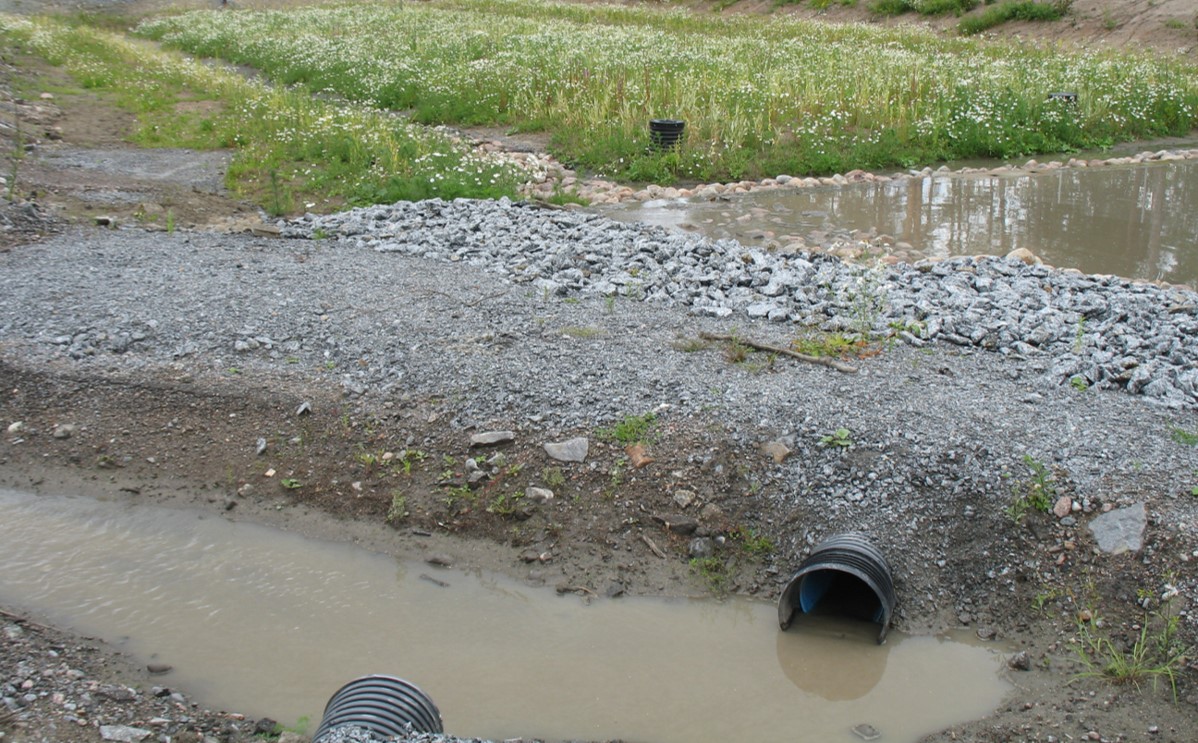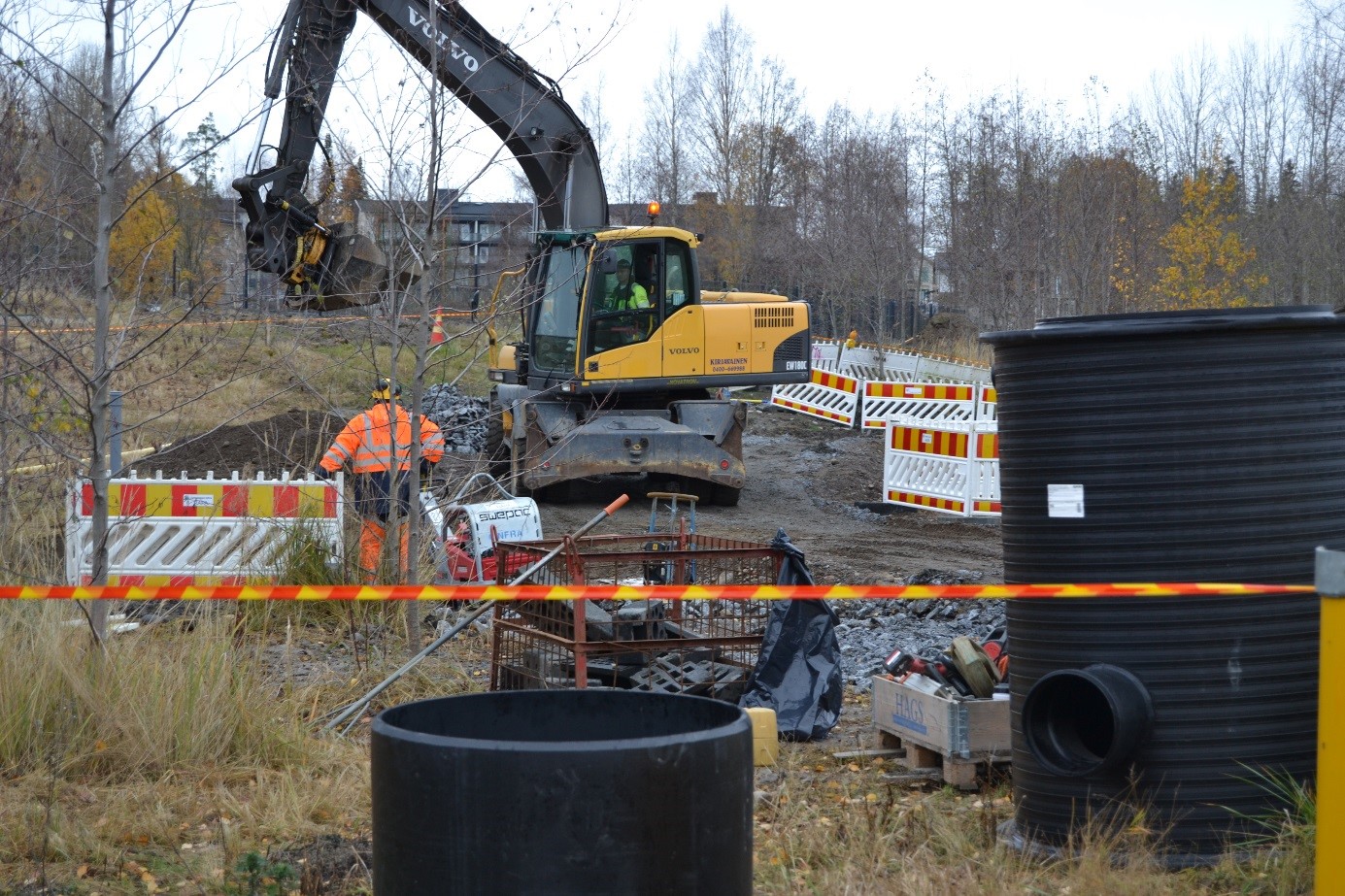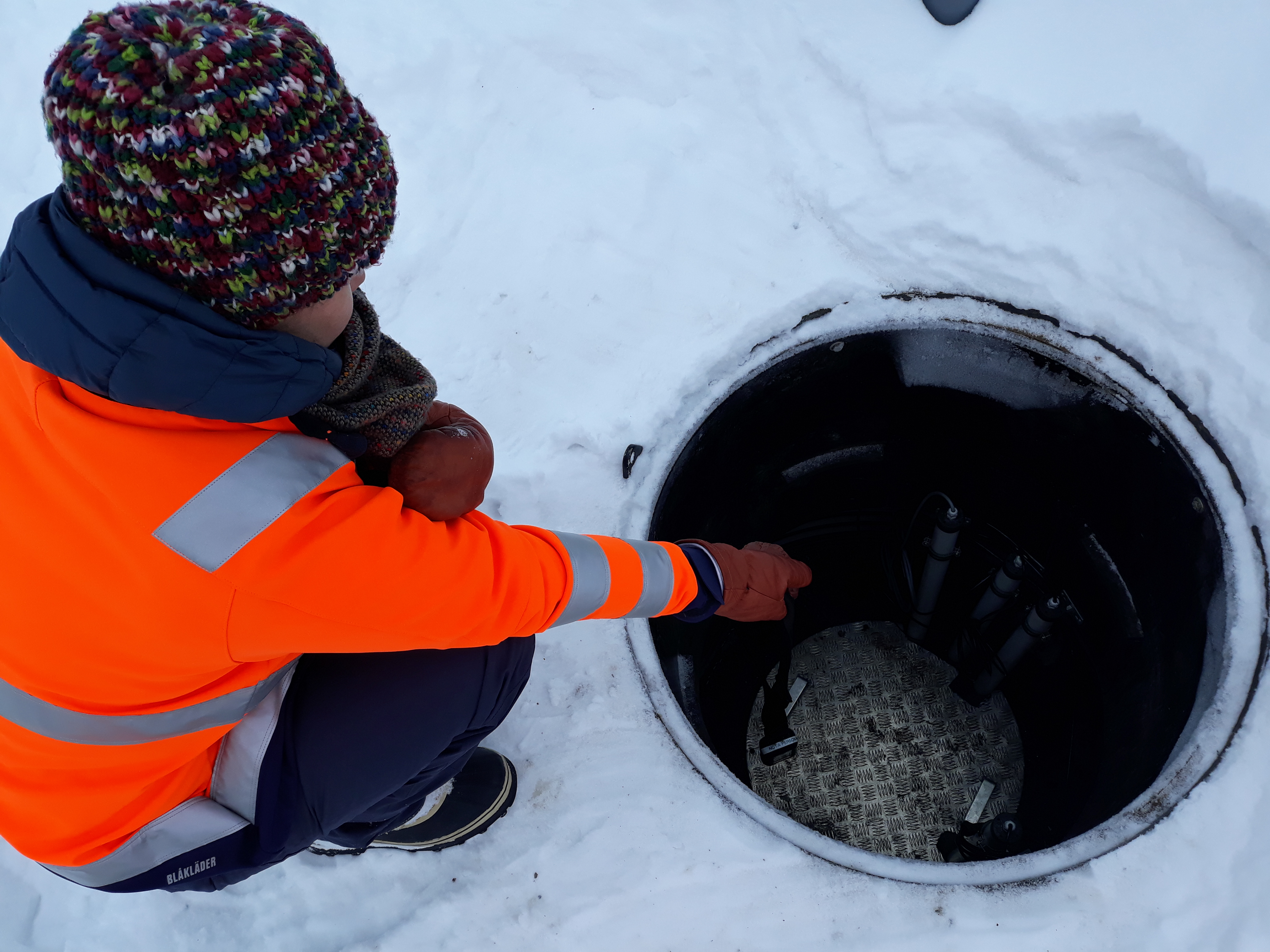
Biofiltration Improves Quality of Storm Water Runoff in Tampere
- Thu, 09/05/2019
Storm water runoff has been found to be a major source of pollution in natural water systems. Many urban streams and lakes are burdened by the nutrients and solids contained in low-quality storm water runoff. Intermittently high levels of faecal bacteria in the water of urban streams can for example prevent the use of the water in the irrigation of allotments. Climate change and increasingly densely built cities are bound to exacerbate the problem. The City of Tampere is therefore acting and investigating biofiltration as a way of improving the quality of urban runoff. Tampere has previous experience of biofiltration, especially in the treatment of meltwater from snow dump sites. The city’s first biofilter was built in 2012 at the Lielahti snow dump site. Subsequently, biofilters have been built at other snow dump sites, as well as in the Vuores residential area. Now that Tampere is a front-runner city in the UNaLab project, which aims to develop nature-based solutions especially for storm water management, new types of filtering materials are being tested for biofiltration.
A new type of biofilter is being tested for purification of low-quality runoff from pulp mill landfill
In autumn 2018, the UNaLab project was launched in Hiedanranta for the biofiltration of nutrient-rich leachate from an old pulp mill landfill. The aim was to build a purification system that can be utilised for cleaning similar waters in Finland and abroad. The landfill leachate is led through a filtration area of approximately 100 square metres consisting of biochar, peat and expanded clay aggregate. During spring 2019, shrubs and perennials will be planted on top of the biofilter for water retention and nutrient binding. Activated charcoal is used for neutralising the unpleasant odours caused by the water. The performance of the biofilter is monitored through two automatic stations and water samples. Initial results show that the biofilter removes at least nitrogen, phosphorus and solids from the landfill leachate. At best, the nitrogen levels have decreased by almost 80% and the phosphorus levels by 90%. The amount of solids has decreased by 90% as well.

The solution has also proven to work well in winter conditions. Low temperatures tend to slow down biological purification, such as in municipal wastewater treatment plants. On the other hand, the large amount of meltwater has affected the biofilter’s performance when the filter capacity has been exceeded. The vegetation to be planted may improve the situation as the roots of the plants increase the absorption of water into the filter materials. If the capacity still is insufficient, it is possible to direct weak meltwater to bypass the filter and only treat the stronger leachate, at least during times of abundant flow. Studies will also be carried out concerning how the biofilter binds carbon and increases the number of pollinating insects. The system, which imitates nature’s own purification mechanisms, was designed in cooperation with experts and the residents of nearby areas.
Biofiltration solutions will be duplicated across the city in the future
Biofiltration solutions are now being built in areas where problems with the quality of storm water runoff have been identified. In 2019, biofilters will be built in Rusko for the treatment of urban runoff from Hervanta, as well as in Nekala for the treatment of runoff from the Nekala industrial area, Viinikka railway yard and Lempääläntie road. In these areas, the poor quality of urban runoff has caused problems: the poor hygienic quality of the runoff from Hervanta is problematic with regard to the use of Houkanoja stream water for irrigation, and the storm water from Nekala and the railway yard burden the Vihioja stream as it occasionally contains oil and glycol. Solutions for these problems are now being sought from systems based on nature’s own purification processes.

Biofiltration: lessons learned and challenges identified
A well-designed and properly built biofiltration area with a suitable capacity can effectively remove solids, total phosphorus and metals. The Lielahti experience shows that the biofiltration area is also effective in removing bacteria and phosphates. It should be noted that the biofilter can only handle relatively small amounts of water and, in the case of overflow, nutrients and other contaminants may be leached out of the structure. With a large drainage basin and therefore large amounts of water, the capacity of the biofilter needs to be sufficient or, alternatively, multiple solutions need to be used. Climate change means more rainfall and meltwater, and this should also be taken into account. Results from Tampere and other studies (including the StormFilter project) show that, in many cases, sand-based biofiltration is a cost-efficient solution for storm water purification. If the removal of nitrogen from the runoff is important for watercourses downstream of the runoff site, biochar or expanded clay aggregate can be used as filtering materials. Also, with the suitable selection of vegetation, it should be possible to enhance the removal of nitrogen.
The advantage of biofiltration areas in relation to, say, wetlands, is that they can be built into a small space. An uncertainty related to biofilters is the filter’s life cycle. It is dependent on at least the quality and quantity of water channeled into the filtration area and the filtering materials used. The functionality of the Hiedanranta biofilter will be monitored through continuous measurements for at least the next three years. During that time, we will be able to gather data on the functionality of the filter and possible saturation of contaminants in landfill leachate. The functionality of the Lielahti snow dump site will be studied through continuous measurements in summer 2019 after seven years of use. It is hoped that these studies will provide additional information on the life cycle of the structure. In the future, the filtering materials of biofilters should primarily be recycled materials. However, further studies are still required concerning their suitability and how they might react to the contaminants filtered.